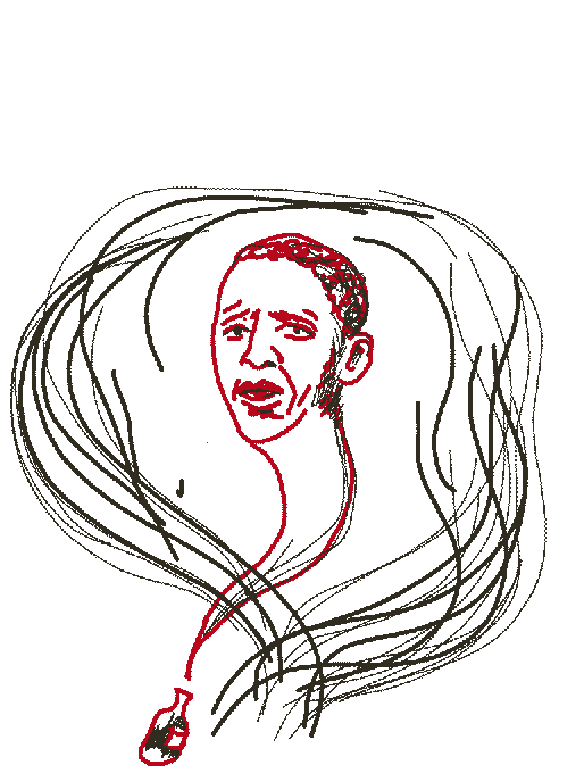The political future of President Donald Trump and the Republican Party over the next two years really comes down to one question: Do traditional measures of popularity mean anything when it comes to Trump?
If they do, the Republican Party and Trump could be in major trouble.
Usually, we wouldn’t even think to ask whether a president with around a 40% approval rating would end up hurting his political party. Yet Trump did something that was seemingly impossible in 2016: He won the presidency, despite being the most unpopular candidate since at least 1952 and with Americans seeming to like the status quo.
President Barack Obama’s net favorability rating in the final Gallup poll using a -5 to +5 scale was +16 percentage points. Trump came in with a -25 percentage point net favorability rating in the same scale. That 41 point difference should have been electoral poison for Trump.
Based upon Gallup polling from the previous six presidential elections without the incumbent running for reelection, Trump should have lost by 9 points given the difference between Obama (the incumbent president) and Trump’s rating. He only lost the popular vote by 2 percentage points and won the Electoral College, however.
Although six data points drawn from previous elections without an incumbent running are a far smaller sample size than I would like, the clear separation between 2016 and what previous years predicted makes it pretty clear that something unusual happened in 2016.
The easy answer is that elections without the incumbent running are also about the candidates who fill the shoes of the incumbents on their party’s presidential tickets. In this case, Hillary Clinton was also very unpopular. In the network exit polls, Clinton had a net favorability rating of -12 percentage points to Trump’s -22 percentage points. This made for the first presidential election in polling history in which both candidates were disliked by more voters than they were liked.
Trump lost pretty much every voter who held a favorable view of Clinton and a unfavorable view of Trump. Likewise, he won pretty much every voter who held a favorable view of him. It was among the 18% of voters who didn’t like either candidate that Trump won the election. He took them by 17 points.
Still, there was no inherent reason to think that Trump would clean up among those who disliked both Clinton and Trump. Prior to the 2016 election, I thought the fact that Clinton was better liked than Trump meant she’d win handily. Put another way, I’m not sure we can necessarily dismiss the fact that Trump did better than what you’d expect given his low ratings.
In 2018, the fundamentals are considerably easier to distill. We can simply look at Trump’s approval rating because he’s the incumbent and midterms are generally about feelings towards the President.
Presidential ratings haven’t predicted midterm results perfectly by any means, but there is a very clear connection. A president with an approval rating of 40% would suggest that a shift of 11 points away from the president’s party in the House results compared to 2016. Given that Republicans won the House by 1 point in 2016, this would mean Democrats winning the House vote by about 10 points in 2018.
Depending on what polls you examine, Democrats could do better or worse than that in 2018. Gold standard polls suggest the Democratic lead on the generic ballot is down to 6 points in April. If the final result in November mirrors that, it would be another point in favor of popularity ratings not meaning the same for Trump as they have for presidents before him.
There are signs, though, that Democrats will do considerably better in the midterms. They are outperforming the partisan baseline in both congressional and state special elections by double digits so far this cycle. If these data points are more predictive of the final result in November, then Trump will not have done significantly better than we’d expect given his approval rating.
A strong Democratic result in the midterm would be worrisome for Republicans heading into 2020. It wouldn’t be because midterm elections predict presidential year results. Rather, it would support the idea that Trump’s poor ratings do matter. And when incumbents are running for reelection, their approval ratings tend to be predictive of the result.
Trump has maintained an approval rating of about 40% throughout most of his presidency. Generally speaking, having lower than a 48% approval rating on Election Day of a presidential year would make the incumbent more likely to lose than win. In fact, FiveThirtyEight’s Nate Silver found in 2011 that a president with an approval rating of just 40% on Election Day would have less than a 10% chance of winning.
In such a scenario, Trump’s only real shot of winning would be if the Democrats nominate another candidate who ended up as unpopular as Hillary Clinton.





